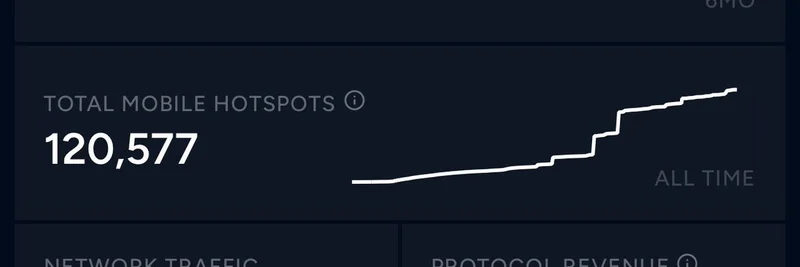If you're in the crypto space, especially building on Solana where meme tokens and DeFi projects thrive, stablecoins are like the steady backbone that keeps everything running smoothly. They're digital assets pegged to stable fiat currencies, like the US dollar, making them perfect for trading, payments, and avoiding the wild volatility of other cryptos. Recently, the team at Capital Markets dropped a handy thread on X breaking down what institutions need to consider when launching a new stablecoin on Solana from scratch. Let's unpack that guide here, making it easy to follow whether you're a blockchain practitioner or just curious about the tech.
Picking Your Issuance Strategy
First things first: how do you want to issue your stablecoin? Capital Markets outlines a few paths, each with its pros and cons. If you're all about control, building everything in-house—like Tether does—gives you full ownership over the process. On the flip side, partnering with a white-label provider, similar to how PayPal launched PYUSD, lets you tap into ready-made expertise without reinventing the wheel.
There's also a hybrid approach, where you handle some parts yourself and outsource others, as seen with M0. Or, if you prefer joining an existing network, something like Paxos' USDG could be your ticket. This decision sets the tone for your project, especially on Solana, which is known for its speed and low costs—ideal for scaling meme token ecosystems or DeFi apps.
Setting Up Banking and Tech Infrastructure
Once your strategy is locked in, it's time to build the backbone. This means forging solid banking relationships to handle fiat reserves securely. You'll need a tokenization engine to manage on-chain actions, like minting and burning tokens. Don't skimp on secure key management—think hardware wallets or multi-signature setups to protect against hacks.
An orchestration layer is crucial too, ensuring seamless transfers between fiat and blockchain. On Solana, this setup shines because of its high throughput, meaning you can process thousands of transactions per second without breaking the bank on fees.
Navigating Regulatory Compliance with Token Extensions
Regulation can be a maze, but Solana's Token Extensions make it manageable. These are built-in features that let you enforce rules directly on the blockchain. For instance, you can automate KYC (Know Your Customer) and AML (Anti-Money Laundering) checks at the transaction level, ensuring only verified users interact with your stablecoin.
Other perks include emergency asset controls for freezing tokens if needed, embedded allowlists and blocklists for sanctions compliance, and privacy controls tailored for institutional users. This is a game-changer for institutions entering the space, as it aligns crypto ops with traditional finance standards while keeping things decentralized.
Building Operational Infrastructure
Operations are where the rubber meets the road. Integrate banking systems for automated issuance and redemption—think wiring fiat in and getting stablecoins out instantly. Track customer balances with an internal ledger, and set up robust KYC/AML workflows to stay compliant.
Secure key management comes up again here; it's non-negotiable for safeguarding assets. For Solana-based projects, this infrastructure supports the vibrant meme token scene by providing stable liquidity pools, making trades faster and cheaper.
Managing Reserves Effectively
Stablecoins live or die by their reserves. Always maintain a 1:1 backing with fiat—never mint more than you hold. Publish proof of reserves regularly to build trust, and use programmatic checks during issuance to prevent over-minting.
Spreading reserves across multiple banks minimizes risk from any single failure. This transparency is key in the crypto world, where trust issues have sunk projects before. On Solana, with its focus on efficiency, these practices ensure your stablecoin can support high-volume DeFi activities without hiccups.
Designing Core Operational Flows
Capital Markets breaks down the issuance and redemption processes clearly. For issuance: accept fiat into a bank account, move it to reserve accounts, then mint the equivalent stablecoins on-chain. Redemption reverses it—receive stablecoins, burn them, pull fiat from reserves, and send it back to the customer.
These flows need to be airtight to maintain the peg and user confidence. Solana's near-instant settlement makes this process feel effortless compared to slower chains like Ethereum.
Why Solana Stands Out
Solana isn't just another blockchain; it's built for speed and scale. It supports compliance across major markets, offers 24/7 settlements at pennies per transaction, and even allows gasless transactions by sponsoring user fees. Local fee markets keep costs predictable, no matter the network congestion.
Plus, the ecosystem is packed with tools to speed up your launch. Whether you're integrating with meme token launchpads or DeFi protocols, Solana's advantages make it a top choice for stablecoin issuers.
Stablecoin launches are no small feat, but with Solana's tech stack, they're more accessible than ever. If you're ready to dive deeper, check out the full guide and connect with the Solana team at solana.com/solutions/stablecoins. This could be the edge your next project needs in the fast-paced world of blockchain and meme tokens.



